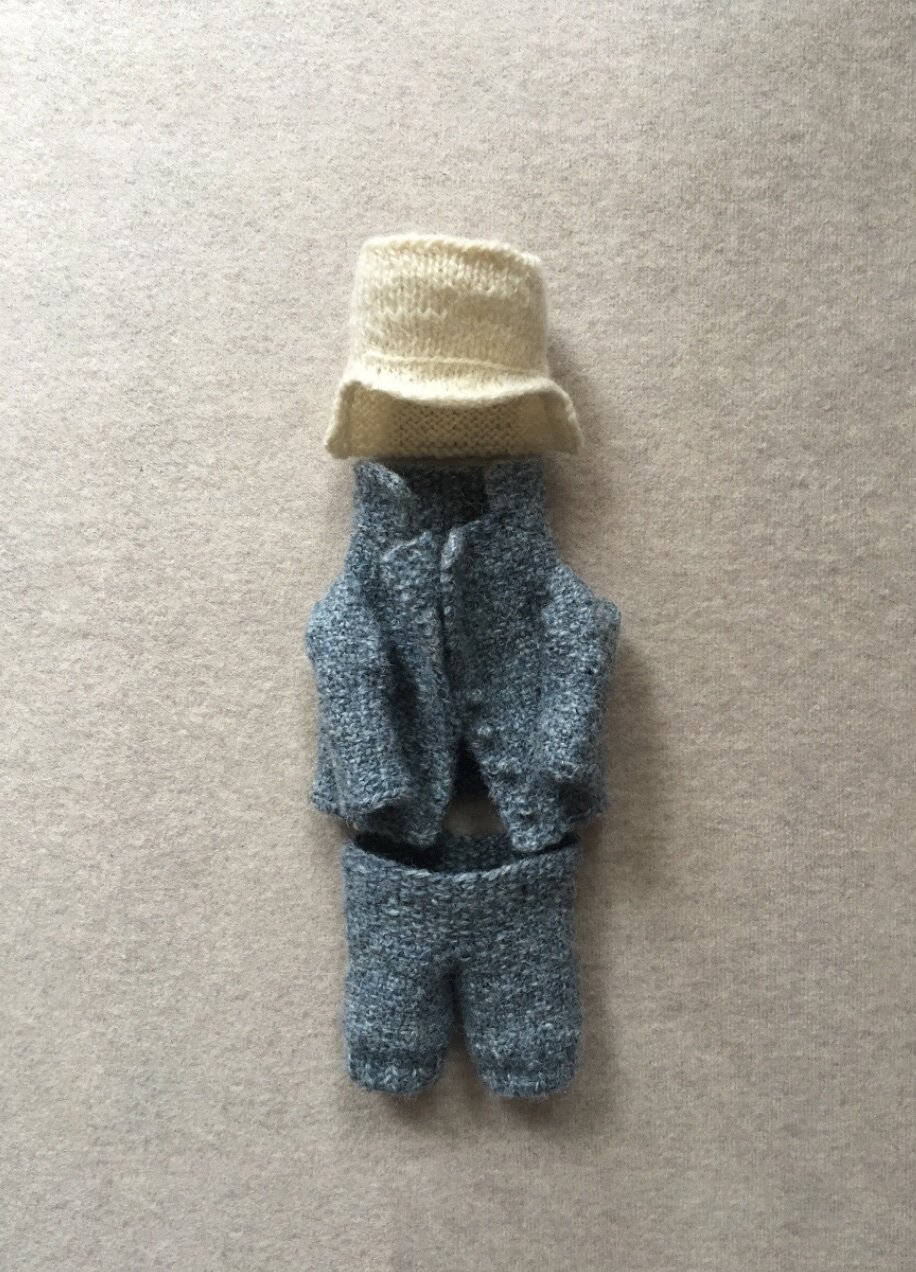LITTLE BEAR
When I first began to imagine how I might create a knitted bear, I was drawn primarily to elements that felt less teddy bear and more actual bear.
After a cursory dive into images of small cubs (and then down a more lengthy rabbit hole watching clips of Alaskan bears catching salmon), I was hooked and began to fixate on more realistic depictions, especially of bear foreheads, ears and paws.
I found their upright, standing positions especially adorable and mesmerizing.
In the subsequent weeks and months of daydreaming and ruminating and swatching, I also drew upon memories of a few of my favorite paintings and bears in books and the enduring feelings of well-being and love they still bring up for me.
I thought of the delicate ears and elongated profiles of artist William Holbrook Beard’s bears (his grave marked by a rotund bronze one in a cemetery I visit often, Green-Wood in Brooklyn) and the elegant slopes of their necks, shoulders and chests.
For the paws, I remembered both the husband and wife bear in The Big Brown Bear illustrated by Gustaf Tenggren in 1947, and the way the husband bear caught a big trout with one simple flip of his oversized paw (after having just rammed that same paw into a bee-filled honey tree with reckless abandon). A part of the original opening image in the book (of the wife bear, which didn’t always appear in later versions) was for me perhaps the most magical one of all:
Another book that always got to me was of course Little Bear by Else Holmelund Minarik, first published in 1957 and illustrated by the incomparable Maurice Sendak. What has stayed with me most from that book is the way that the Little Bear looked at his Mother throughout (with some of the purest expressions of trust and love on his face that I’d ever seen in a book). And when the Little Bear requests at one point that his mother make him something to wear (and she promptly creates an outfit for him), it is a crafting act of love so deep and true, it practically jumps off the page.
Embracing a tighter gauge and smaller scale, I created this pattern using a DK weight yarn on size 1 needles. For fill, I wanted to keep things as natural as I could and, ideally, use a substance one might readily have at home. Wanting to maintain a weighty bean bag feel, I chose arborio rice (which is similar in shape and heft to plastic pellets). There is also a natural, biodegradable stuffing that a kind knitter told me about called kapok, made from the dried fruit of the kapok tree, which is light and soft and also makes a great filling. Indeed some of my most successful samples have come from mixing both rice and kapok, but I cannot think of any stuffing scenarios that would not work well (I’ve also tried popcorn kernels, ground walnut shells, uncooked lentils and wool roving, all with success).
For the clothing, I chose Jamieson’s Shetland Spindrift which is rustic and homey, and with an elaborate 225 color palette, always provides the same rush for me that looking at an enormous box of pastels or watercolors does.
Skill-wise, I would categorize the pattern as advanced-intermediate. It includes techniques such as short rows and working in the round on double pointed needles at a small gauge. It is also important to note that I included a bit of embroidery in the pattern (back stitching primarily for the eyes, nose and mouth, and a few french knots to make the buttons for the coat).
As with all of my patterns, I included as many how-to images as I could, and I am always available to answer any questions you may have along the way.
MATERIALS YOU WILL NEED
Yarn A: 1 skein of Kelson DK by Kelson Goods (75% superwash merino and 25% nylon) in color Brown Bear. Each skein is approximately 122 yards (112 meters). Little Bear requires approximately 60 yards.
Yarns B and C: 1 ball each of Jamieson’s Shetland Spindrift, 100% pure Shetland Wool in 1390 Highland Mist (B) and 104 Natural White (C). Each ball is approximately 25 grams and 115 yards (105 meters). The Coat requires approximately 63 yards of Yarn B. The pants require approximately 32 yards of Yarn B, and the hat requires approximately 21 yards of Color C.
A set of US 1 double pointed needles
Stitch markers (including removable stitch markers)
Waste yarn
1 bag of arborio rice or stuffing of your choice
Small amount of black embroidery floss ( (I used DMC brand in color 310)
Small amount of off-white embroidery floss (I used DMC brand in color 3033)
Tapestry needle
Thin, sharp sewing needle
GAUGE
For Little Bear:
26 stitches and 36 rows = 4 inches in stockinette stitch
For Clothing:
30 stitches and 56 rows = 4 inches in Linen Stitch for Coat and Pants
32 stitches and 48 rows = 4 inches in Stockinette Stitch for Hat
SIZES
Finished Dimensions:
Little Bear is approximately 7 inches long


















